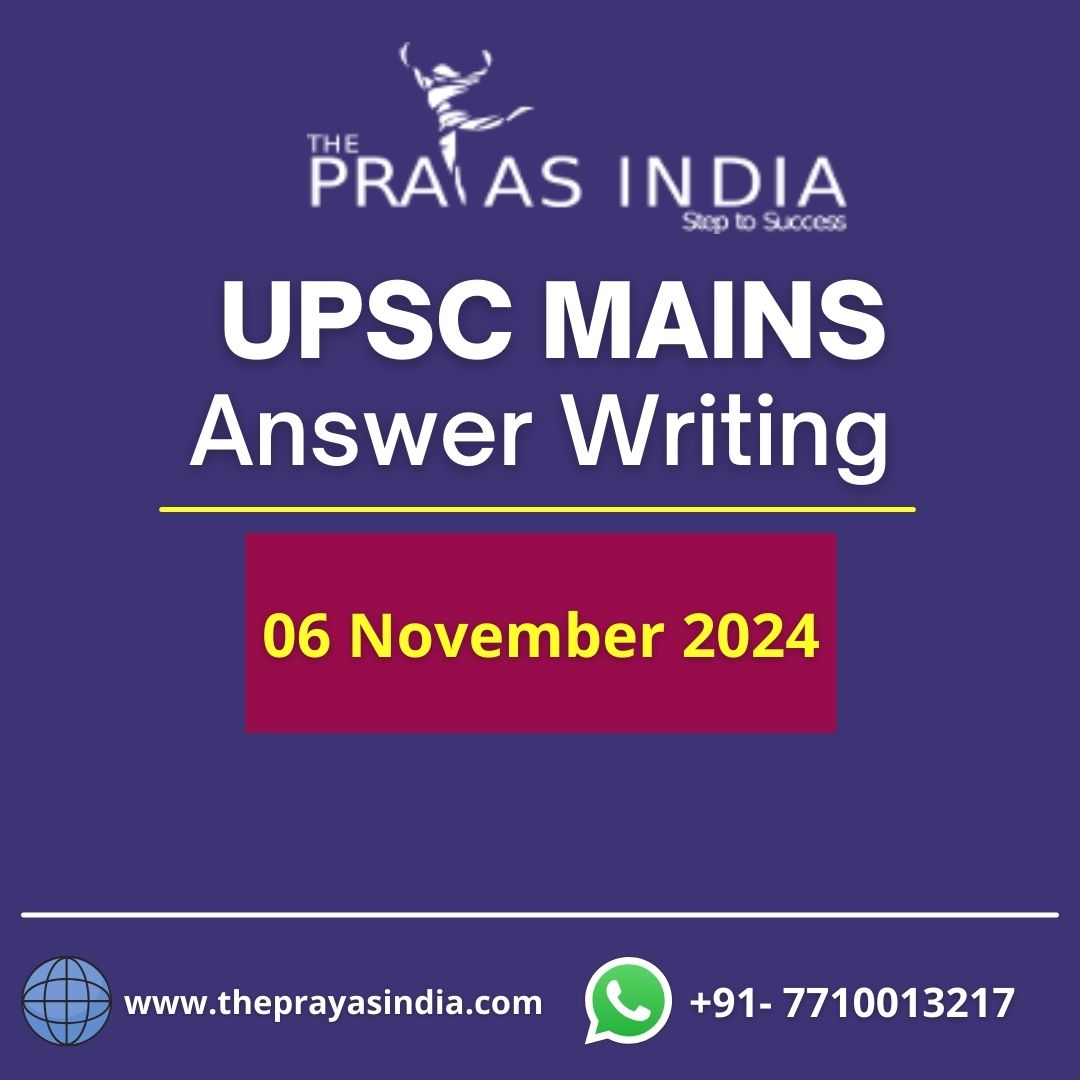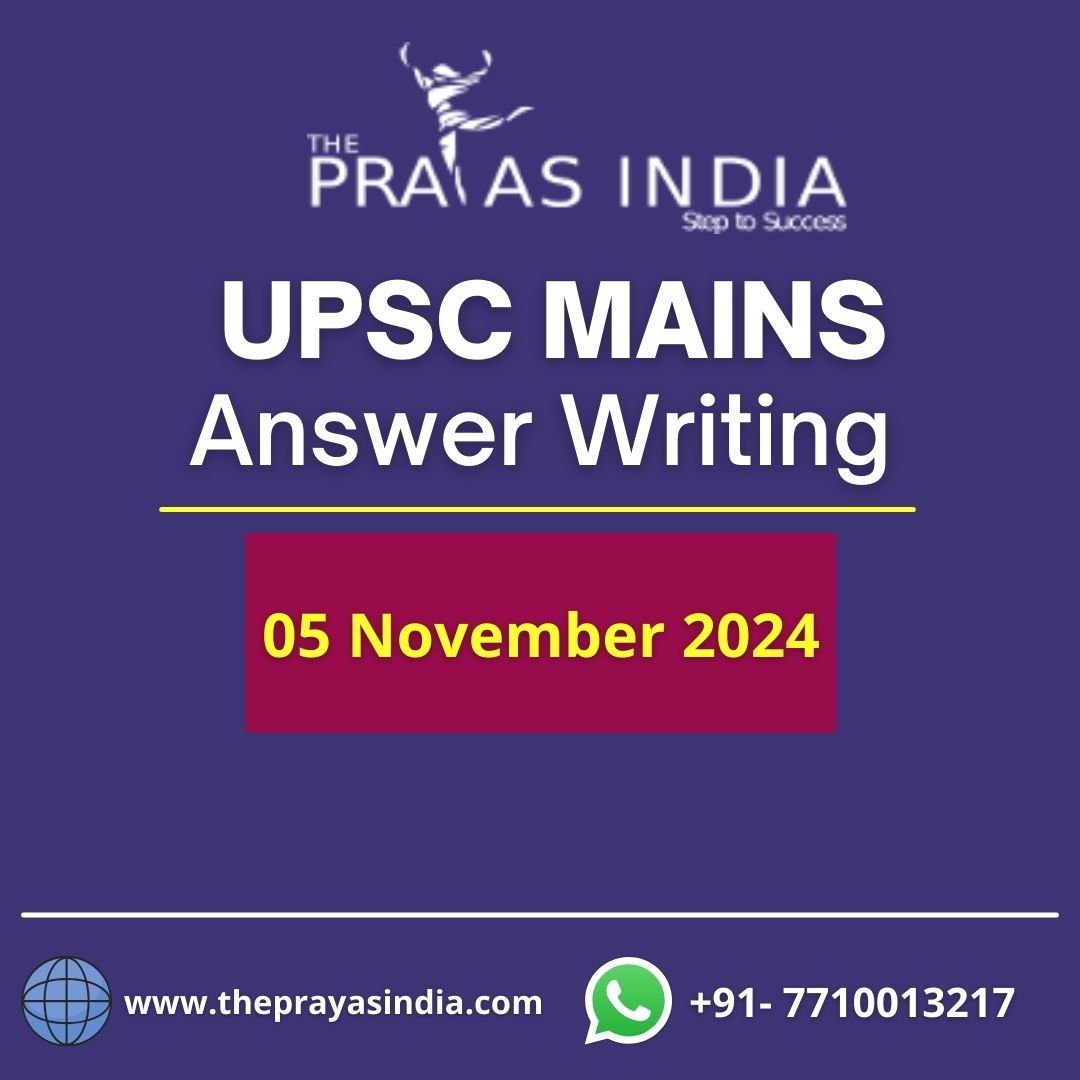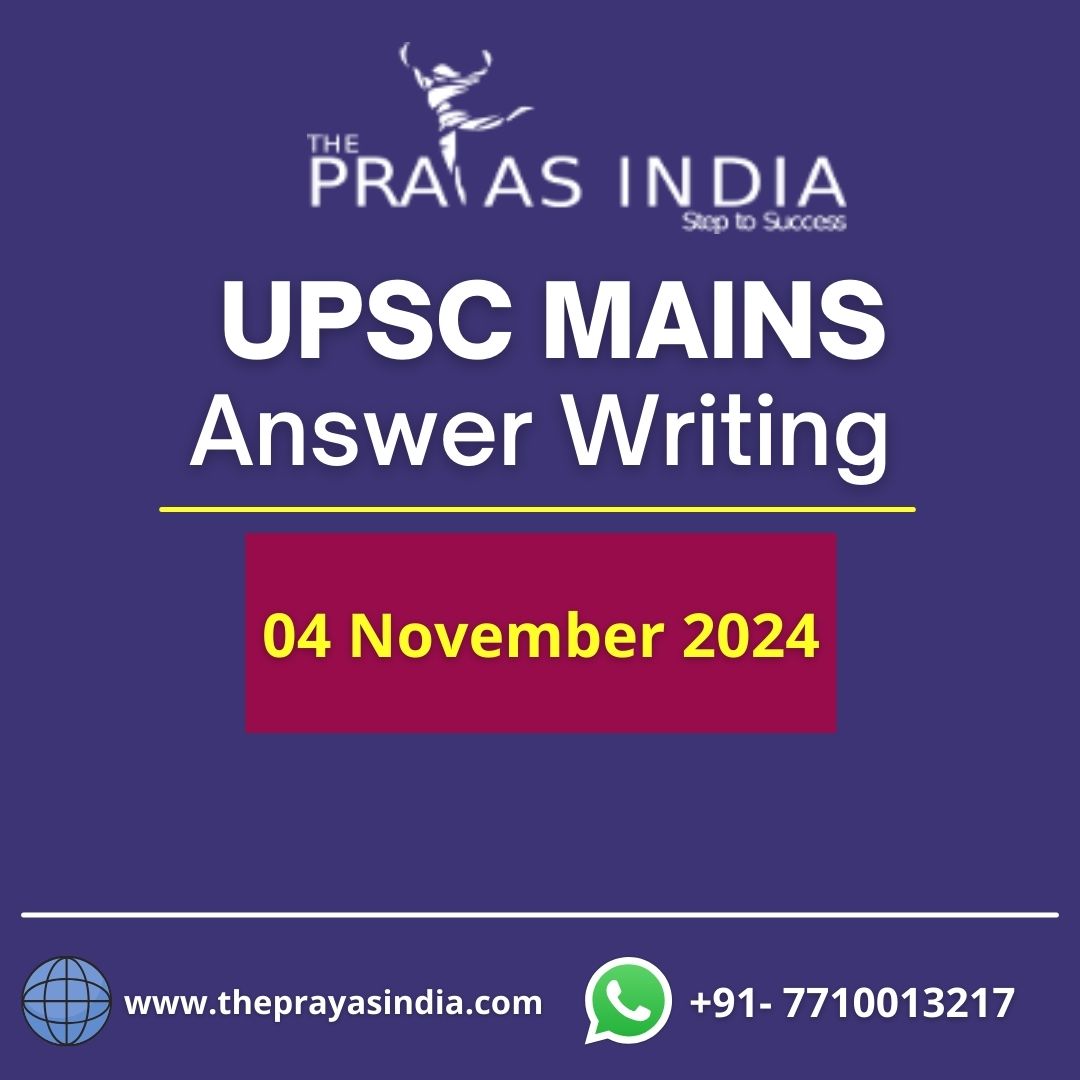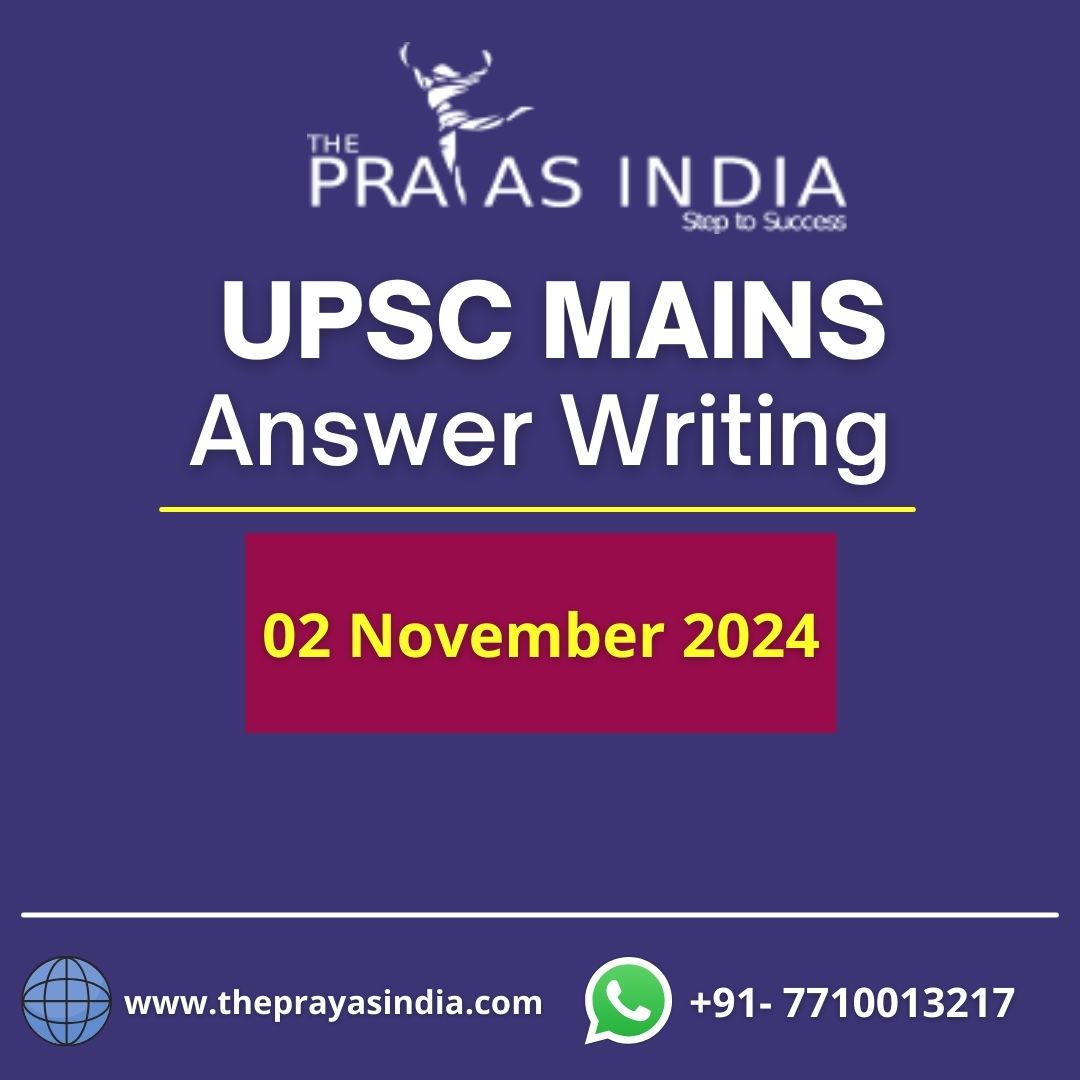MAINS DAILY QUESTIONS & MODEL ANSWERS
Q1. In India, prejudices and differences and how they project onto politics co-exist alongside valuing diversity. Alternative ideas, inclusionary narratives exist even if the corresponding politics does not. Comment.
GS II – Election related issues
Introduction:
- India is one of the most diverse lands found anywhere else in the world. From language to dressing-style, the country has been hailed as one of the most complex amalgamation of various cultural identities. The large number of different cultures, knitted together in such a close and perfect manner, make India’s diversity one of the wonders of the world.
- Pew Research survey findings on religion and nationhood in India in July 2021 highlighted that valuing religious diversity (84 per cent) is among the key attributes of being an Indian along with respecting elders (88 per cent) and having an Indian ancestry (70 per cent). On the other hand, a majority also believes that being a Hindu (56 per cent) and speaking Hindi (57 per cent) are important. Among Hindus, the support is higher — for 64 per cent, being a Hindu and for 59 per cent speaking Hindi is important for Indian-ness.
Homogenizing tendencies:
- Pew Research survey findings on religion and nationhood in India in July 2021 highlighted that valuing religious diversity (84 per cent) is among the key attributes of being an Indian along with respecting elders (88 per cent) and having an Indian ancestry (70 per cent).
- On the other hand, a majority also believes that being a Hindu (56 per cent) and speaking Hindi (57 per cent) are important.
- Among Hindus, the support is higher — for 64 per cent, being a Hindu and for 59 per cent speaking Hindi is important for Indianness.
Factors Leading to Unity amidst Diversity in India:
- The entire country is governed by one single Constitution.Even, most of the states follow a generalised scheme of 3-tier government structure, thus imparting uniformity in national governance framework. Further, the Constitution guarantees certain fundamental rights to all citizens regardless of their age, gender, class, caste, religion, etc.
- Religious co-existence:Religion tolerance is the unique feature of religions in India due to which multiple religions co-exist in India. Freedom of religion and religious practice is guaranteed by the Constitution itself. Moreover, there is no state religion and all religions are given equal preference by the state.
- Inter-State mobility:The Constitution guarantees freedom to move throughout the territory of India under Article 19 (1) (d), thus promoting a sense of unity and brotherhood among the masses.
- Other factors such as uniform pattern of law, penal code, and administrative works(Eg. All India services) too lead to uniformity in the criminal justice system, policy implementation etc.
- Economic integration:The Constitution of India secures the freedom of Trade, Commerce and Intercourse within the Territory of India under Article 301. Further, the Goods and Service Tax (GST) have paved way for ‘one country, one tax, one national market’, thus facilitating unity among different regions.
- Institution of pilgrimage and religious practices:In India, religion and spirituality have great significance. From Badrinath and Kedarnath in the north to Rameshwaram in the south, Jagannath Puri in the east to Dwaraka in the west the religious shrines and holy rivers are spread throughout the length and breadth of the country. Closely related to them is the age-old culture of pilgrimage, which has always moved people to various parts of the country and fostered in them a sense of geo-cultural unity.
- Fairs and festivals:They also act as integrating factors as people from all parts of the country celebrate them as per their own local customs. Eg. Diwali is celebrated throughout by Hindus in the country, similarly Id and Christmas are celebrated by Muslims and Christians, respectively. Celebration of inter-religious festivals is also seen in India.
- Climatic integration via monsoon:The flora and fauna in the entire Indian subcontinent, agricultural practices, life of people, including their festivities revolve around the monsoon season in India.
- Sports and Cinema:These are followed by millions in the country, thus, acting as a binding force across the length and breadth of India.
Factors that threaten the unity:
- Unfortunately, the peace and understanding among different communities has been endangered lately. The biggest of these is the problem of communalism.
- Religious fundamentalism and communal fanaticism have raised their ugly heads which vitiate the atmosphere of peace and tranquillity of the nation. The ugliest manifestation of this trend is the occurrence of communal riots witha disconcerting frequency in some parts of the country.
- There has been a steady rise in the number of communal incidents in India since independence.
- People are being lynched on suspicious grounds.These communal elements and their presence in society now are being used by political parties and politicians for their vested interests.
- Sectarianism: Sectarianism poses another threat to national integration because it creates a further gulf among various sects of the people belonging to the same religion. For example, there is a tussle and strife between Sunnis and Shias of Muslim community on the one hand and Kabir-panth and Gorakhpanth or Nirankaris and the Alkali Sikhs of the Sikh community on the other hand.
- Casteism: More and more power is getting concentrated in the hands of the dominant castes and the latter resent the attempts made by the lower castes to move up. This has resulted in inter-caste rivalries and tensions. Reservation issue has further intensified the differences between various castes
- Linguism: Controversy over ‘official language’ had triggered off serious law and order problems in southern belts.
- Regionalism: Regionalism presents a serious threat to national integration. Cultural diversity, economic and social disparities, religious and linguistic differences, economic imbalances and uneven regional development are the root causes of the growth spurt of regionalism. The recent attacks in Gujarat on migrants from other states shows that regionalist feelings precede over the Indian feeling.
- Corruption and Illiteracy: Due to Indian diversity and previous traditions, politics is limited to certain families carrying out the legacy. This has increased overall corruption in India and due to nervousness of these politicians to look after poor and disabled in turn increased illiteracy rate.
- Lack of Urbanization in Some states: Only because of diversity, still there are many states with underdeveloped infrastructures where there is no electricity and no proper roads for transportation. On the other hand, some states are developing with rapid pace to compete with some of the biggest commercial cities in the world.
Conclusion:
- Despite the diversity in terms of race, religion, Language, caste and culture India is still a strong nation tied together with integration and unity in both politico-geographic and cultural backgrounds. Along with diversity and various such aspects, India is on its way of growth and development and it is worth mentioning that it has one of the string and stable economies in the world.
Q2. What is meant by the model code of conduct (MCC) during elections? Do you think that MCC needs to be included under the statue for its uniform and effective implementation? Critically analyse?
GS II – Election-related issues
Introduction:
- Model code of conduct is the guidelines issued by the Election Commission of India for conduct of political parties and candidates during elections mainly with respect to speeches, polling day, polling booths, election manifestos, processions and general conduct. It aims to ensure free and fair elections.
Authority of ECI vis-à-vis MCC:
- Article 324 says the superintendence, direction and control of all elections to Parliament, the State legislatures, and the offices of the President and Vice-President shall be vested in the EC.
- The Article has been interpreted by courts and by orders of the EC from time to time to mean that the power vested in it is plenary in nature.
- In other words, the EC can take any action it deems fit to ensure that elections and the election process are free and fair.
- The EC monitors the adherence of political parties and candidates to the ‘Model Code of Conduct’.
- If the violations are also offences under election law and the criminal law of the land, the EC has the power to recommend registration of cases against the offenders.
- However, for some violations — such as canvassing for votes during a period when electioneering is barred, making official announcements while the MCC is in force, and making appeal to voters on sectarian grounds — the EC has the power to advise or censure candidates, in addition to directing registration of cases.
- In some cases, as recent incidents would show, the EC may bar candidates or leaders from campaigning for specified periods.
- Asking individuals to leave a constituency or barring entry into certain areas are other powers that the EC may exercise.
- These powers are not necessarily traceable to any provision in law, but are generally considered inherent because of the sweeping and plenary nature of the EC’s responsibility under the Constitution to ensure free and fair elections.
- Its powers extend to postponing elections to any constituency, cancelling an election already notified, and even to abrogate or annul an election already held.
Why MCC needs to be under statute:
- The EC does not have the power to disqualify candidates who commit electoral malpractices. At best, it may direct the registration of a case.
- The EC also does not have the power to deregister any political party. However, the Constitution empowers the EC to decide whether a candidate has incurred disqualification by holding an office of profit under the appropriate government, or has been declared an insolvent, or acquired the citizenship of a foreign state.
- When a question arises whether a candidate has incurred any of these disqualifications, the President of India or Governor has to refer it to the EC. The poll panel’s decision on this is binding.
Way Forward:
- Under Chief Election Commissioners like T.N. Seshan and J.M. Lyngdoh, the commission has in the past shown the capacity to come up with creative solutions that adhere to both the spirit and the letter of the law.
- MCC should be provided with statutory backing. It should be made a part of the Representation of the People Act, 1951 to make the MCC more powerful.
- Establishment of special fast track courts to solve the MCC violation cases at a faster rate.
- The law commission recommendations should be implemented to save the unnecessary spending of public money during elections.
- Public awareness about MCC needs to be developed. The use of app like cVIGIL should be encouraged to reduce violations during polls.
- Stakeholders including Internet companies should come up with a code for Social Media and Internet.
- MCC has an indisputable legitimacy and parties across the political spectrum have generally adhered to its letter and spirit. The immaculate independence of the EC and its uncompromising attitude towards enforcing the code, combined with the perception among parties that following the code far outweighs the costs accrued if violated by other parties, especially the ruling one, have led to the success of the MCC since its inception.




